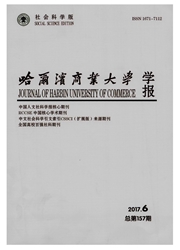

 中文摘要:
中文摘要:
在复杂的国际经济背景下,“两岸四地”各执一币的格局加大了协同抵抗金融风险的难度。也成为“两岸四地”经贸深入合作和经济进一步融合发展的阻碍。通过以“两岸四地”货币合作的宏观经济基础为前提,从多边汇率相互影响的角度出发,采用“货币锚”效应模型考察人民币汇率的波动态势及其与“港澳台”三地货币之间的联动关系,从而揭示港币、澳门币和新台币对人民币的锚定程度。实证结果显示,“两岸四地”宏观经济政策目标一致性日趋增强,港澳台三地货币在对“锚货币”选择中汇率中人民币权重越来越大,因此“两岸四地”构建人民币区具有一定的可行性。
 英文摘要:
英文摘要:
Under the background of complex international economic situation, the pattern to which the Chinese Mainland, Hong Kong, Macau, Tai-wan each hold one currency beeomes more difficult for synergistically resisting financial risks. Meanwhile it hinders the further development eeonom- ic integration of economy and trade cooperation for the Four - region across the strait. On the basis of the c monetary eooperation in the Four - region Across the Strait, this paper takes account of multilateral exchange rate influence between each other, and through a Monetary Anchor Effect model explores the fluctuation trend of RMB exchange rate and its linkage relationship between Hong Kong dollar , Macan Patacas , New Tai- wan dollar. The empirical results show that the c policy goal consistency gets increasingly enhanced, and the exchange rate of RMB accounts for an bigger weight in anchor currency choosing for Hong Kong dollar , Macao Patacas , new Taiwan dollar. Finally we include that building a RMB Bloc in the Four - region across the strait of China has a certain feasibility.
 同期刊论文项目
同期刊论文项目
 同项目期刊论文
同项目期刊论文
 期刊信息
期刊信息
